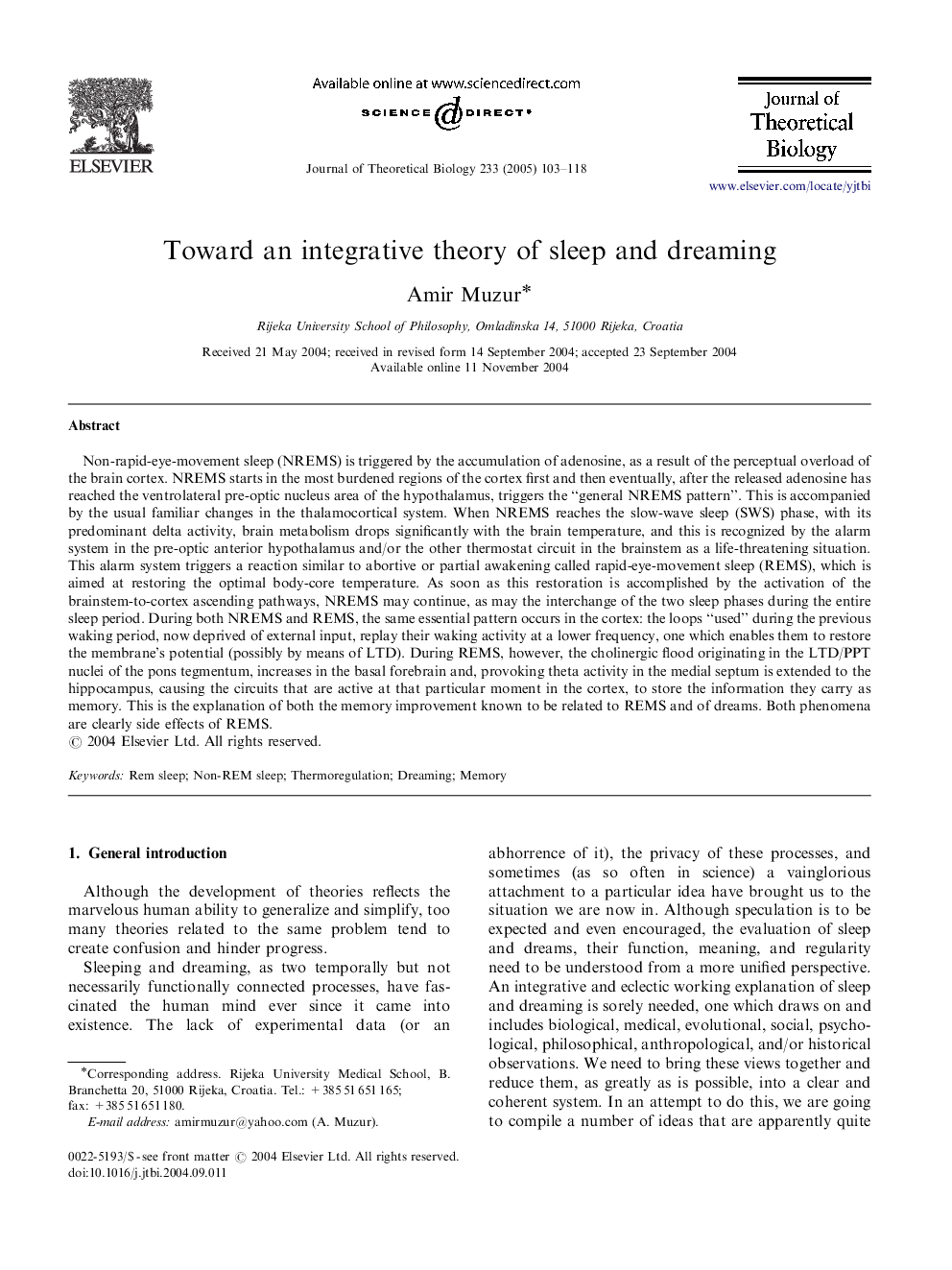| کد مقاله | کد نشریه | سال انتشار | مقاله انگلیسی | نسخه تمام متن |
|---|---|---|---|---|
| 9469843 | 1319067 | 2005 | 16 صفحه PDF | دانلود رایگان |
عنوان انگلیسی مقاله ISI
Toward an integrative theory of sleep and dreaming
دانلود مقاله + سفارش ترجمه
دانلود مقاله ISI انگلیسی
رایگان برای ایرانیان
کلمات کلیدی
موضوعات مرتبط
علوم زیستی و بیوفناوری
علوم کشاورزی و بیولوژیک
علوم کشاورزی و بیولوژیک (عمومی)
پیش نمایش صفحه اول مقاله

چکیده انگلیسی
Non-rapid-eye-movement sleep (NREMS) is triggered by the accumulation of adenosine, as a result of the perceptual overload of the brain cortex. NREMS starts in the most burdened regions of the cortex first and then eventually, after the released adenosine has reached the ventrolateral pre-optic nucleus area of the hypothalamus, triggers the “general NREMS pattern”. This is accompanied by the usual familiar changes in the thalamocortical system. When NREMS reaches the slow-wave sleep (SWS) phase, with its predominant delta activity, brain metabolism drops significantly with the brain temperature, and this is recognized by the alarm system in the pre-optic anterior hypothalamus and/or the other thermostat circuit in the brainstem as a life-threatening situation. This alarm system triggers a reaction similar to abortive or partial awakening called rapid-eye-movement sleep (REMS), which is aimed at restoring the optimal body-core temperature. As soon as this restoration is accomplished by the activation of the brainstem-to-cortex ascending pathways, NREMS may continue, as may the interchange of the two sleep phases during the entire sleep period. During both NREMS and REMS, the same essential pattern occurs in the cortex: the loops “used” during the previous waking period, now deprived of external input, replay their waking activity at a lower frequency, one which enables them to restore the membrane's potential (possibly by means of LTD). During REMS, however, the cholinergic flood originating in the LTD/PPT nuclei of the pons tegmentum, increases in the basal forebrain and, provoking theta activity in the medial septum is extended to the hippocampus, causing the circuits that are active at that particular moment in the cortex, to store the information they carry as memory. This is the explanation of both the memory improvement known to be related to REMS and of dreams. Both phenomena are clearly side effects of REMS.
ناشر
Database: Elsevier - ScienceDirect (ساینس دایرکت)
Journal: Journal of Theoretical Biology - Volume 233, Issue 1, 7 March 2005, Pages 103-118
Journal: Journal of Theoretical Biology - Volume 233, Issue 1, 7 March 2005, Pages 103-118
نویسندگان
Amir Muzur,